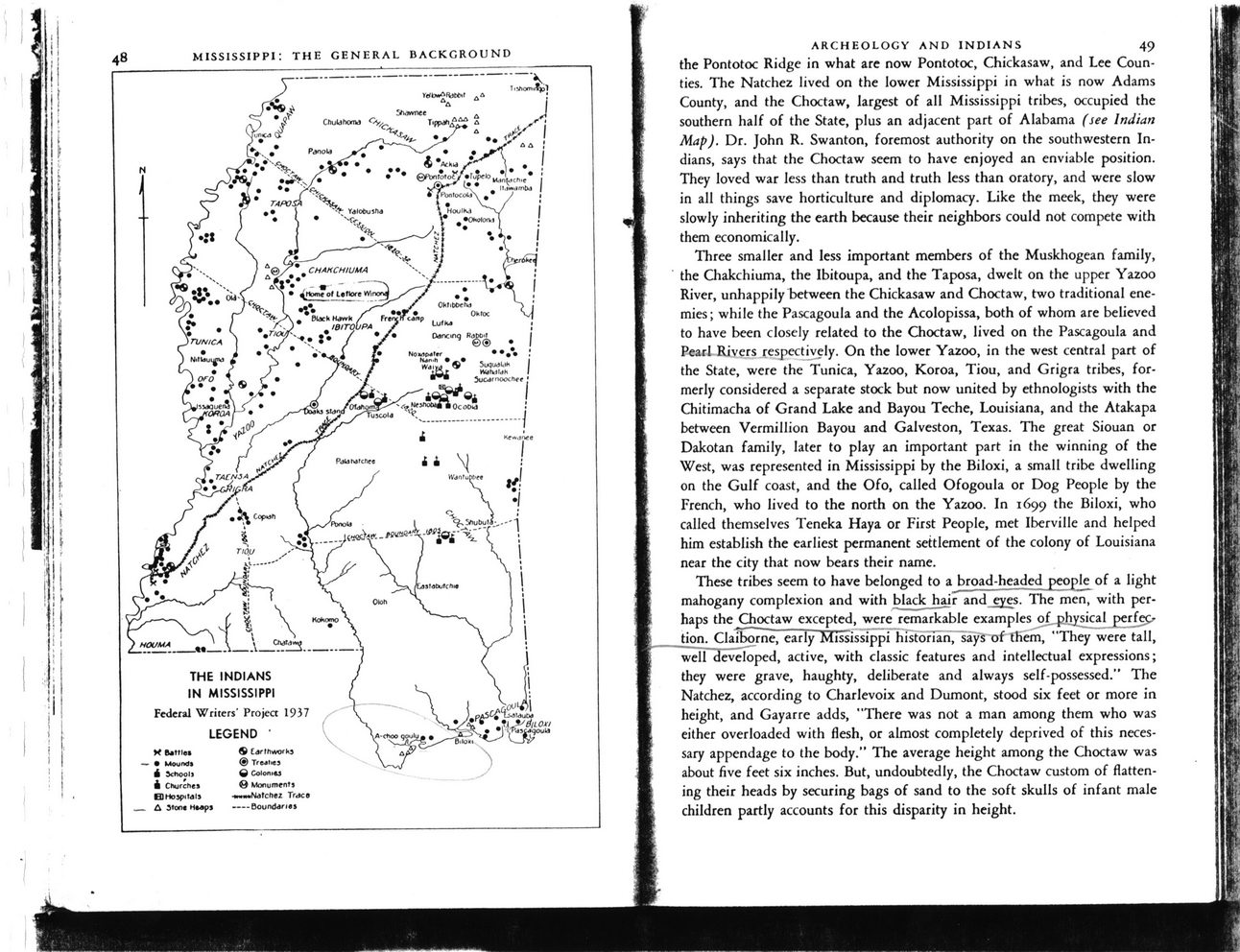This text was obtained via automated optical character recognition.
It has not been edited and may therefore contain several errors.
48 MISSISSIPPI: THE GENERAL BACKGROUND ARCHEOLOGY AND INDIANS 49 the Pontotoc Ridge in what are now Pontotoc, Chickasaw, and Lee Counties. The Natchez lived on the lower Mississippi in what is now Adams County, and the Choctaw, largest of all Mississippi tribes, occupied the southern half of the State, plus an adjacent part of Alabama (see Indian Map). Dr. John R. Swanton, foremost authority on the southwestern Indians, says that the Choctaw seem to have enjoyed an enviable position. They loved war less than truth and truth less than oratory, and were slow in all things save horticulture and diplomacy. Like the meek, they were slowly inheriting the earth because their neighbors could not compete with them economically. Three smaller and less important members of the Muskhogean family, the Chakchiuma, the Ibitoupa, and the Taposa, dwelt on the upper Yazoo River, unhappily between the Chickasaw and Choctaw, two traditional enemies; while the Pascagoula and the Acolopissa, both of whom are believed to have been closely related to the Choctaw, lived on the Pascagoula and Pearl Rivers respectively. On the lower Yazoo, in the west central part of the State, were the Tunica, Yazoo, Koroa, Tiou, and Grigra tribes, formerly considered a separate stock but now united by ethnologists with the Chitimacha of Grand Lake and Bayou Teche, Louisiana, and the Atakapa between Vermillion Bayou and Galveston, Texas. The great Siouan or Dakotan family, later to play an important part in the winning of the West, was represented in Mississippi by the Biloxi, a small tribe dwelling on the Gulf coast, and the Ofo, called Ofogoula or Dog People by the French, who lived to the north on the Yazoo. In 1699 the Biloxi, who called themselves Teneka Haya or First People, met Iberville and helped him establish the earliest permanent settlement of the colony of Louisiana near the city that now bears their name. These tribes seem to have belonged to a broad-headed people of a light mahogany complexion and with black hair and eyes. The men, with perhaps the Choctaw excepted, were remarkable examples of_|ihysical jjerfep-tion. Claiborne, early Mississippi historian, says of tliem, "They were tall, well~3eveIoped, active, with classic features and intellectual expressions; they were grave, haughty, deliberate and always self-possessed.” The Natchez, according to Charlevoix and Dumont, stood six feet or more in height, and Gayarre adds, "There was not a man among them who was either overloaded with flesh, or almost completely deprived of this necessary appendage to the body.” The average height among the Choctaw was about five feet six inches. But, undoubtedly, the Choctaw custom of flattening their heads by securing bags of sand to the soft skulls of infant male children partly accounts for this disparity in height.

Hancock County Early WPA-Guide-to-Mississippi-(038)